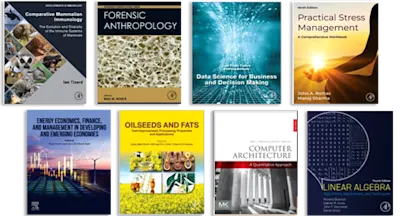
Viscoelasticity and Collective Cell Migration
An Interdisciplinary Perspective Across Levels of Organization
- 1st Edition - January 15, 2021
- Imprint: Academic Press
- Editors: Ivana Pajic-Lijakovic, Elias Barriga
- Language: English
- Paperback ISBN:9 7 8 - 0 - 1 2 - 8 2 0 3 1 0 - 1
- eBook ISBN:9 7 8 - 0 - 1 2 - 8 2 0 3 1 1 - 8
Viscoelasticity and Collective Cell Migration: An Interdisciplinary Perspective Across Levels of Organization focuses on the main viscoelastic parameters formulated based on multis… Read more
Purchase options

Viscoelasticity and Collective Cell Migration: An Interdisciplinary Perspective Across Levels of Organization focuses on the main viscoelastic parameters formulated based on multiscale constitutive modeling and how to measure these rheological parameters based on existent micro-devices such as micro-rheology and micro-elastography. The book sheds light on inter-relationships across viscoelasticity scales, an essential step for understanding various biomedical processes such as morphogenesis, wound healing and cancers invasion. Cumulative effects of structural changes at subcellular and cellular levels influence viscoelasticity at a supracellular level are also covered, providing valuable insights for biologists, physicists, engineers, students and researchers in the field of developmental biology.
As this is a complex multidisciplinary field, perspectives are included from experts in biology, biochemistry, biomedicine, biophysics and biorheology. Readers will gain a deeper understanding of the complex dynamics that represent challenges and the necessity for further development in the field.
- Discusses the biological/biochemical mechanisms of collective cell migration
- Covers the inter-relation between collective cell migration and viscoelasticity by proposing rheological parameters
- Contains critical consideration of various experimental techniques that are suitable to measure these parameters
Research Scientists/ Engineers and Graduate Students working in the field of Viscoelasticity
1. Viscoelastic Impedance of Cells and Tissues -Basic Concepts and Physiological Functions
Erich Sackmann and Florian Rehfeld
2. Recent advances in imaging of cell elasticity
Guy Cloutier
3. Biophysical origins of viscoelasticity during collective cell migration
Andrew Clark
4. Intrinsic and extrinsic viscoelasticity modulates cell migration in vivo
Elias Barriga
5. Effects of time delays and viscoelastic parameters in oscillatory response cell monolayers
Jose J Munoz
6. Mechanical changes driving 3D cell motility in development and cancer
Timo Betz
7. Comparing interfacial, viscous and elastic contributions during 3D cell aggregate rearrangements
Yasuji Sawada, Jean-Paul Rieu, Olivier Cochet Escartin, Helene Delanoe-Ayar
8. Viscoelasticity of multicellular systems caused by collective cell migration: multi scale modelling considerations
Ivana Pajic-Lijakovic and Milan Milivojevic
8. Flow dynamics of 3D multicellular systems under confinement
Karine Guevorkian and David Gonzalez-Rodriguez
9. Multicellular systems response under stress: From subcellular to supracellular levels
Ivana Pajic-Lijakovic and Milan Milivojevic
10. Cytoskeletal and cell adhesion contributions to tissue stresses
Gregory Weber
11. Confinement-induced transition between wave-like collective cell migration modes
Giovanni Cappello, Thomas Boudou and Martial Balland
- Edition: 1
- Published: January 15, 2021
- Imprint: Academic Press
- Language: English
IP
Ivana Pajic-Lijakovic
EB